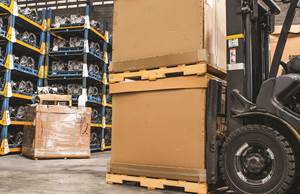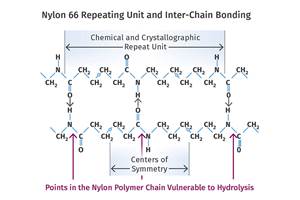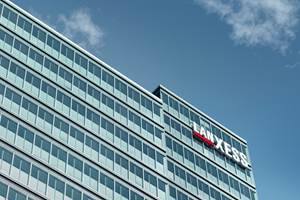Your Business Pricing Update - January 2008
Prices Will Hold—And May Rise
Last year saw significant increases in prices of commodity thermoplastics, driven by unprecedented energy and feedstock costs.
Last year saw significant increases in prices of commodity thermoplastics, driven by unprecedented energy and feedstock costs. Moreover, a robust export market fed by the weak U.S. dollar offset lackluster domestic demand, keeping resin supplies tight to balanced. One brighter spot was the significant drop in imports of finished goods, which is expected to continue. All in all, the majority view is that—barring a recession—prices will remain flat or could rise in the first half, though there is some chance of price relief in PVC and perhaps PP.
CONTINUED PRESSURE ON PE PRICES
Polyethylene prices rose a total of 24¢ to 26¢/lb in 2007, leaving them just 5¢ below their all-time high in the fall of 2005. Resin makers have pushed back their 6¢ increase announced for Dec. 1 and the 5¢ hike for Dec. 15. Meanwhile, the London Metal Exchange (LME) short-term North American futures contract for January in blown film butene LLDPE was 62.6¢/lb, up from December’s 60.8¢.
Contributing factors: Although price pressure from ethylene monomer showed signs of abating in December, other factors are expected to keep pushing PE prices upward, through at least the first quarter. Higher oil prices are one key factor. The other, driven by the weak dollar, is continued strong export demand from Europe and China. The latter is poised to play a bigger role due to a serious shortage in diesel fuel due to high crude oil prices, which has cut Chinese ethylene production by 10%, thus curtailing PE resin production. “We don’t see any significant relief in resin prices until after the first quarter. It will be an export-driven first quarter,” says Mike Burns, global business director of PE at resin purchasing consultant Resin Technology, Inc. (RTI), Fort Worth, Texas.
Says a source at one major PE supplier, “There is no question that these higher prices continue to put a lot of pressure on our customer base. The key is to manage their business well, which includes not getting into contracts with their customers where they are locked into pricing.”
Though high exports lifted overall demand for PE 4.5% through the third quarter, domestic demand was flat if not a bit lower than in 2006. Domestic demand for 2008 is cautiously projected to be flat or a slight uptick. Plant operating rates in 2007 were at 95% through September, and dropped to 92% by year’s end. For 2008, plant operating rates are projected to remain in the same range.
PP PRICES UP
Polypropylene prices in 2007 rose a total of 18¢/lb through November. Suppliers’ 6¢ increase for Dec. 1 was pushed back to January, even though an additional hike of 3¢/lb was announced for Jan. 1. Meanwhile, LME’s January North American futures contract for g-p injection-grade homopolymer sold at 65.5¢/lb, up from December’s 64.6¢.
Contributing factors: The main driver in PP resin prices has been the unprecedented propylene monomer tabs. November monomer contract prices rose a whopping 7.25¢, reaching a record high of 61.5¢/lb—10¢ higher than even in the fall of 2005, following supply disruptions caused by Hurricane Katrina. December contract bids ranged from 3¢ to 9¢/lb and will probably settle somewhere in the middle. “High monomer prices have started to affect resin demand, so that exports, which have been the saving grace for PP resin suppliers, are not as attractive for suppliers,” says Scott Newell, director of client services for PP at RTI.
Late last year, Newell and other industry sources saw a growing gap between PP resin prices for prime and secondary resin markets, which had been very close all year. Still, no one is projecting any price relief in this quarter. A big factor is shutdowns of older PP capacity early in the year, and questions about how soon the new replacement capacity will actually come on stream. One major supplier notes that PP supply could be tight through at least the first quarter.
Shutdowns include Dow’s 500-million-lb plant in Louisiana, two Basell Canadian plants totaling 900 million lb, and Ineos’ 450-million-lb unit in Texas. Upcoming new capacity includes Basell’s restart of 450 million lb in Texas; debottlenecking by Total and Formosa, each at 100 to 200 million lb/yr; and 900 million lb of new capacity from the Basell/Indelpro joint venture in Mexico. According to RTI’s Newell, the latter will reduce U.S. PP exports to Mexico, which have averaged 110 million lb/month.
Says Newell, “I don’t see any major reduction in resin prices if crude oil prices stay in the $85 to $95/barrel range. Also, PP supply has been very tightly balanced. There is some potential for lower PP prices if prices of propylene monomer drops 3¢ to 5¢.” On the other hand, one leading supplier holds out hope for some price relief from lower monomer prices and lower PP exports. Industry sources generally project that PP prices will be somewhat higher than last year, barring a drop in crude oil prices. Newell from RTI sees PP prices moving up or down within a 10¢ window.
Domestic PP demand in 2007 grew only 1% to 2%. Similar growth is expected this year by most industry sources. But one major supplier thinks growth could return to more typical levels of 3% because the weak dollar has made finished-product imports more costly.
FLAT PRICES AHEAD FOR PVC
In November, PVC producers say they implemented 4¢ of the 6¢/lb increase they asked for, but one published chemical price index says they got only 3¢. Resin makers issued a TVA for the remaining 2-3¢ in December. January contract prices were expected to slip lower. Export prices were also dropping.
Contributing factors: Domestic PVC demand for 2007 was expected to end the year off about 6% from 2006. Total demand, however, could be down only 3%, buoyed by strong exports, which were up about 37%. Industry sources attribute export demand primarily to the weak dollar.
The market expects next year to be down in the first half, and then to pick up slightly in the second half, unless a recession strikes. Shintech told customers it will bring its new Louisiana plant up in the first quarter, but they expect it in the second quarter or later. Georgia Gulf plans to shut temporarily its 450-million-lb plant in Sarnia, Ont.
PS WILL STAY HIGH
In November, polystyrene producers asked for a 4¢/lb increase, of which they got 2¢ and delayed 2¢. At mid-month, December prices were flat, but not eroding. Meanwhile, Chevron and Ineos/Nova announced 4¢/lb increases for Jan. 1. The narrowed price premium for PS over PP, now only about 4¢/lb vs. as much as 16-18¢ previously, isn’t expected to last long.
Contributing factors: PS usage was down about 4.7% in 2007. With EPS included, demand was down 3.5%. If there is no recession, PS could expect modest growth this year. But PS producers already see a recession in domestic durables like refrigerators.
Expect more plant closures as suppliers shed older capacity. Ineos Nova, for example, will shut down this month its 220-million-lb Belpre, Ohio, plant, which represents 12% of its North American PS capacity. Last month, the company shut down its Montreal plant, which produced 120 million lb. Meanwhile, the joint venture of Dow and Chevron Phillips, to be called Americas Styrenics, is expected to start up in this quarter with headquarters in Houston.
| Market Prices Effective Mid-Dec A |
|
|
KEY: Colored areas indicate pricing activity. An arrow () indicates direction of price change. aTruckload, unless otherwise specified. bUnfilled, natural color, unless otherwise specified. cBased on typical or average density. dNot applicable. eNovolac and anhydride grades for coils, bushings, transformers. fNovolac and anhydride grades for resisitors, capacitors, diodes. gIn quantities of 20,000 lb. h19,800-lb load. jLME 30-day futures contract for lots of 54,564 lb.. |
Related Content
The Fantasy and Reality of Raw Material Shelf Life: Part 1
Is a two-year-old hygroscopic resin kept in its original packaging still useful? Let’s try to answer that question and clear up some misconceptions.
Read MoreHow Do You Like Your Acetal: Homopolymer or Copolymer?
Acetal materials have been a commercial option for more than 50 years.
Read MoreWhat is the Allowable Moisture Content in Nylons? It Depends (Part 1)
A lot of the nylon that is processed is filled or reinforced, but the data sheets generally don’t account for this, making drying recommendations confusing. Here’s what you need to know.
Read MoreLanxess and DSM Engineering Materials Venture Launched as ‘Envalior’
This new global engineering materials contender combines Lanxess’ high-performance materials business with DSM’s engineering materials business.
Read MoreRead Next
Troubleshooting Screw and Barrel Wear in Extrusion
Extruder screws and barrels will wear over time. If you are seeing a reduction in specific rate and higher discharge temperatures, wear is the likely culprit.
Read MoreHow Polymer Melts in Single-Screw Extruders
Understanding how polymer melts in a single-screw extruder could help you optimize your screw design to eliminate defect-causing solid polymer fragments.
Read More



























